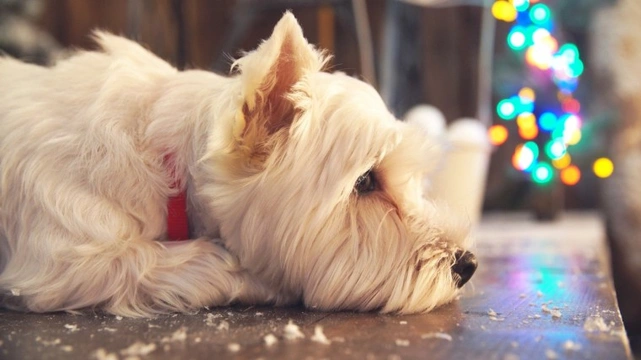
Make a New Year’s resolution for your dog: Get them to a healthy weight!
Very few dog owners in the UK can honestly say that their dogs are within their ideal weight norms, and most dogs over the age of around three or four have started to get a little too rounded around the edges due to a combination of not enough exercise and too many treats!
What is even more concerning is that a large number of the UK’s dog owners cannot identify the healthy weight norms for their dog at all, and mistakenly think that their weight is within the appropriate parameters.
Often, this happens because so very many dogs in the UK are overweight that for some breeds that tend to run to fat like the pug, we see more overweight members of the breed than we do lean and healthy ones.
However, being obese, or even just a few pounds overweight, can have a huge negative impact on your dog’s health and directly shorten their lifespan too. All of this means that as we come into 2020 and start the New Year, one resolution that many if not most dog owners should make (and stick to!) is to make 2020 the year that they get their dogs to a healthy weight, and keep them there for life.
With this in mind, this article will outline how to make a plan to get your dog’s weight under control for the New Year, and how to identify what weight you should be aiming for in the first place. Read on to learn more.
Assessing your dog’s weight and setting a goal
If you think you can tell if your dog is overweight or not, think again; you might be wrong. Whether or not a dog is overweight isn’t about a number on the scale; every dog breed has a range of weight norms, and there is no one size fits all figure.
To determine if your dog’s weight is healthy or not, you also have to be able to interpret their body condition score. Knowing their actual weight is important too, in order to set a goal and monitor progress; but the body condition score is the beginning.
So, how do you find out your dog’s body condition score, get their accurate weight, and determine what their goal weight should be? Contact your local vet, as virtually all UK practices run free weight clinics and offer support and guidance to help dog owners to do just this.
Making a plan
Once you’ve determined how much weight your dog needs to lose, you should also develop a timeframe for their weight loss; and this should be very slow and gradual, and designed to support long-term health. Crash dieting or overly restricting or cutting your dog’s food intake is a very poor idea, just as it is for people. The more weight your dog has to lose, the longer this will take, but be prepared to think in months rather than weeks unless your dog is large and really does only need to lose a couple of pounds.
This plan should factor in how and what you feed to your dog, their exercise, and monitoring their weight and weight changes on a weekly or monthly basis too.
Dietary changes
There are a couple of approaches to cutting your dog’s calorie intake; feed the same food they eat now, only less of it, or change them to a lower calorie food that means you won’t have to reduce the volume of their meals.
Whichever approach you take, make the change gradually and ideally in conjunction with the weight clinic at your local veterinary practice. Remember that your dog’s food needs to be weighed and given in appropriate portions, you cannot just guess and expect your dog to lose weight!
Treats and rewards
Restricting your dog’s diet won’t help them to lose weight if you make up the shortfall with treats and scraps! You can factor treats and rewards into your dog’s daily diet, but once more, this needs to be planned, and deducted from their main meal’s calorie intake.
Try to choose lower calorie and healthier treats too, and measure them out at the start of the day so you don’t overfeed.
Exercise
A dog that is unfit and overweight might find exercise a struggle, but upping their activity levels goes a long way to reducing their weight, making them healthier, and meaning you don’t have to cut their portion sizes by as much! Most dogs would like more food and more exercise rather than a lesser amount of either, and so begin to increase and gradually extend your dog’s exercise each day as well as working on their food intake.
Once more, do this slowly and gradually.
Monitoring
It is important to monitor your dog’s weight loss as you go along, so that you can judge how well it is working and also to ensure that your dog isn’t losing weight too quickly, which is not a good thing either.
Maintaining
Once your dog has reached their goal weight, you will have to set up a maintenance diet plan for them to help them to maintain it, and this can actually be harder than helping your dog to lose weight in the first place.
Again, your local vet can help out with this a lot, and remember that to help your dog to maintain a healthy weight you need to continue to provide enough exercise and monitor their food portions and treats allowance for life; otherwise your dog will simply gain weight and become unhealthy once again!



